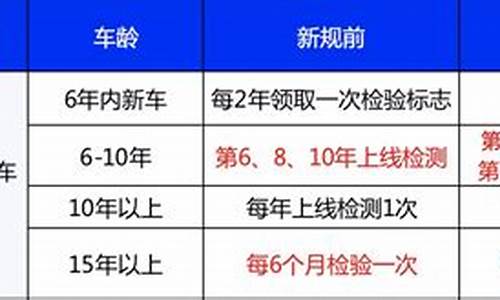prelude中文_prelude中文意思
下面,我将用我自己的方式来解释prelude中文的问题,希望我的回答能够对大家有所帮助。让我们开始讨论一下prelude中文的话题。
1.john denver 《today》的中文翻译
2.** 音乐之声的简介
3.英语音乐里你都知道哪些词汇以及它对应的中文意思?
4.rises用中文谐音怎么读
5.谁能帮忙找点古典音乐资料 要英文的

john denver 《today》的中文翻译
今日
今天的桃花仍抱着枝上,我可以品尝你的草莓, 我还是你喝甜酒万人,明天将所有通行证,我就会忘记所有的喜悦,是 煤矿今天我将变成一个大少爷,我会是一个流浪者,你就会知道我是谁的歌 我唱我还是盛宴在你的桌子上,我会睡在你的三叶草管它什么明天会带来什么? 而今天的桃花仍抱着枝上,我可以品尝你的草莓, 我还是你喝甜酒万人,明天将所有通行证,我就会忘记所有的喜悦.
我不能只满足于昨天的荣耀,我不能靠诺言冬春今天是我的时刻, 现在是我的故事,我会笑,我也会哭,我会唱歌,而今天的桃花仍然继续 藤蔓我还是你的口味, 我还是喝你的甜葡萄酒百万明天将所有通行证 ,我就会忘记所有的喜悦.
** 音乐之声的简介
中文歌词:
奇异恩典 何等甘甜
我罪以得赦免
前我迷失 今被寻回
瞎眼今得看见
如此恩典 使我敬畏
使我心得安慰
初信之时 即蒙恩惠
真是何等宝贵
许多危险 试练网罗
我已安然经过
靠主恩典 安全不怕
更引导我归家
闻主之名 犹如甘露
慰我疾苦 给我安宁
以己一身 救赎世人
舍弃自我 跟随圣恩
将来禧年 圣徒欢聚
恩光爱谊千年
喜乐颂赞 在父座前
深望那日快现
英语音乐里你都知道哪些词汇以及它对应的中文意思?
《音乐之声》是由美国音乐剧的泰斗理查德·罗杰斯(Richard Rodgers)和奥斯卡·汉默斯坦二世(Oscar Hammerstein II)根据玛丽亚·冯·特拉普(Maria Von Trapp)的自传:《冯·特拉普家的歌手们》(The Story of the Trapp Family Singers)改写而成的。 音乐故事片《音乐之声》的剧作者是美国剧作家勒曼。
《音乐之声》于1959年11月16日在百老汇的鲁德-方特恩剧院(Lunt-Fontanne Theatre)公演,成为50年代百老汇公演时间第二长的音乐剧。1965年二十世纪福克斯**公司(20th Century Fox)拍的**版《音乐之声》使它登上了世界舞台,受到全世界各个国家数百万观众的喜爱。人类记忆中最值得珍惜和细细回味的艺术佳作,好莱坞音乐歌舞片中经典中的经典,**史上绝妙的神来之笔。
基本资料
片名The Sound of Music
译名音乐之声
年代1965
国家美国
片长174 Mins
类别音乐剧
语言英文/普通话
更多中文片名: 真善美 、仙乐飘飘处处闻
更多外文片名:
Novicia rebelde, La.....Argentina / Mexico / Peru
Mélodie du bonheur, La.....Canada (French title) / France
Meine Lieder, meine Tr?ume.....Austria / West Germany
Rodgers and Hammerstein's The Sound of Music.....UK (complete title) / USA (complete title)
A Muzsika hangja.....Hungary
A Novi?a Rebelde.....Brazil
Helisev muusika.....Estonia
Música no Cora?o.....Portugal
Neseli günler.....Turkey (Turkish title)
Somriures i llàgrimes.....Spain (Catalan title)
Sonrisas y lágrimas.....Spain
Sound of music - Laulava Trappin perhe.....Finland
Tutti insieme appassionatamente.....Italy
导演:
罗伯特·怀斯 Robert Wise
编剧:
恩斯特·莱赫曼 Ernest Lehman ....(screenplay)
Howard Lindsay ....(book) &
Russel Crouse ....(book)
Maria von Trapp ....(book "The Story of the Trapp Family Singers") uncredited
主演:
朱丽·安德鲁斯 Julie Andrew s ....Maria 玛丽亚
克里斯托弗·普卢默 Christopher Plummer ....Captain Georg von Trapp 乔治·冯·特拉普上校
埃琳诺·帕克 Eleanor Parker ....Baroness Elsa Schraeder 埃尔莎·施瑞德男爵夫人
影片类型: 家庭 / 剧情 / 音乐 / 传记
片长:174 min
国家/地区: 美国
对白语言: 英语
色彩: 彩色
幅面: 70毫米宽银幕**
混音: 单声道 / 70 mm 6-Track / 立体声
制作成本:$8,200,000/estimated
版权所有:(Copyright ?MCMLXV by Argyle Enterprises, Inc., Twentieth Century-Fox Film Corporation; 2 March 1959; LP30289)
拍摄日期: 19年9月1日 -
摄影机: MCS 70 (Modern Cinema Systems) (aerial shots)
摄制格式: 65 mm
洗印格式: 8 mm (anamorphic) 、35 mm 、70 mm 、16 mm
胶片长度: 1060 m (8 mm prints)、4695 m (Sweden)
主要人物
冯·特拉普 (Georg Von Trapp)
玛丽亚 (Maria)
丽莎 (Liesl)
菲瑞克瑞 (Friedrich)
路易莎 (Louisa)
库特 (Kurt)
布姬塔 (Brigitta)
玛塔 (Marta)
葛特儿 (Gretl)
获奖记录
第38届奥斯卡金像奖: 最佳影片、最佳导演、最佳剪辑、最佳配乐和最佳音响。
剧情简介
22岁的玛丽亚是一个萨尔茨堡修道 音乐之声剧照院里的志愿修女,但是,她活泼好动和热爱自然的性格却总是让她在修道院里惹麻烦。修女院里的女院长(Mother Abbess)觉得她这样的活泼的性格不适合僧侣生活。于是,当她接到冯·特拉普上校家寻求家庭教师的请求,她决定让玛丽亚去,也借此让她探索出真正的生活目的。 (本段插曲:The Sound of Music(玛丽亚)、Maria(修女们))
玛丽亚到达冯·特拉普(Captain Georg Von Trapp)家,发现他是一个有七个孩子的鳏夫,长期的海军生活和亡妻的悲伤使他对待孩子像管教士兵一样严格。很快,玛丽亚就明白了以前那些家庭教师离开的原因,原来是孩子们得不到父亲的关爱,总是用捉弄教师来吸引父亲的注意。 (本段插曲:I Have Confidence(玛丽亚))
上校要求玛丽亚也像他一样严格,但是玛丽亚没有听从,而是用她天生的温柔和善良赢得了孩子们的友好。趁上校不在的时候,她用窗帘给每个孩子缝制了游戏服装,带领他们到市场游玩,在美丽的阿尔卑斯山上野餐,还教会了他们唱歌。孩子们原有的拘禁和忧郁渐渐地被音乐和笑声代替了。 (本段插曲:Sixteen Going on Seventeen(丽莎和罗夫)、My Favourite Things(玛丽亚)、Do-Re-Mi(玛丽亚和孩子们))
不久上校回家了,还带回了孩子们喜欢的麦克叔叔(Uncle Max)和孩子们不甚喜欢的,上校的女朋友,埃尔莎·施瑞德男爵夫人(Baroness Elsa Schraeder)。上校对玛丽亚的做法十分不满,可是当他听到孩子们为男爵夫人唱歌的时候十分感动,因为玛丽亚把从他妻子去世之后家里就不再有的音乐又带了回来。玛丽亚还和孩子们一起准备了一场木偶戏,上校为玛丽亚可以感染他人的热情所吸引了。(本段插曲:The Sound of Music Reprise(孩子们、The Lonely Goatherd (玛丽亚和孩子们)、Edelweiss(上校和丽莎))
几天之后,上校和男爵夫人一起举行了一场盛大的舞会,孩子们在舞会中也有歌唱表演。在舞会中,玛丽亚给孩子们示范奥地利的民间舞蹈“涟恩德拉(又译:兰德勒)”(Laendler)。出乎意料的是,上校走过来和玛丽亚共舞,舞蹈最后他们互视对方,他们之间的爱意一目了然。这些,都被男爵夫人看在眼内,当晚,她劝玛丽亚回修道院。玛丽亚恐怕自己对上校的感情会越陷越深,于是,她悄悄地离开了。 (本段插曲:So Long, Farewell(孩子们))
玛丽亚走了之后,男爵夫人用尽办法讨孩子们的欢心都没有成效。当孩子们得知上校要和男爵夫人结婚的消息后,他们更加难过。他们到修道院找玛丽亚却没能见到她。玛丽亚向院长坦白了她对上校的爱情和对生活的不知所措,院长告诉她要有骨气勇气,哪怕翻越世界上的每一座山峰也要找到自己的真爱。于是,玛丽亚回到冯·特拉普家里。 玛丽亚回来之后,男爵夫人发现她已经无法挽回玛丽亚和上校之间的感情,她主动退出了婚约,上校和玛丽亚互诉衷肠,很快地,他们就结婚了。(本段插曲:Climb Ev'ry Mountain(院长)、My Favourite Things Reprise(孩子们)、Something Good(玛丽亚和上校)、Maria Reprise(修女们))
可惜,他们的生活并没有从此就永远幸福快乐。当他们还在度蜜月的时候,德国纳粹占领了奥地利。连大女儿丽莎深爱的小伙子罗夫也成了纳粹。当他们赶回萨尔茨堡,发现到处已经是纳粹旗帜横行了。他们不在的时候,负责照顾孩子们的麦克叔叔帮他们注册参加了萨尔茨堡音乐节(Salzburg Festival)。上校一回到家里,就接到了纳粹发来的电报,要他立即到纳粹海军报道。一向痛恨纳粹的上校决定带领全家人离开奥地利。当他们晚上离开别墅的时候,被早就躲在门外监视他们的纳粹拦住了,于是上校解释说他们离开是为了参加希尔斯伯格节演出,并拿出节目单作为证据。在纳粹的陪同下,他们来到了会场,演出了孩子们准备好的歌曲。在这时,上校和玛丽亚演唱了《雪绒花》,歌曲里对祖国奥地利的热爱之情浓郁深厚,不顾旁边持枪的纳粹守卫,在场的观众也跟着上校一起唱完了《雪绒花》。 (本段插曲:Sixteen Going on Seventeen Reprise(玛丽亚和丽莎)、Do-Re-Mi Reprise(玛丽亚、上校和孩子们)、Edelweiss Reprise(玛丽亚、上校和孩子们)、So Long, Farewell Reprise(玛丽亚、上校和孩子们))
演出之后,趁着颁奖的时候上校一家人逃离演出现场,纳粹一路追到修道院里,在修女们的帮助下,上校一家人藏在了墓碑后面,躲过纳粹的追踪,然后他们翻过阿尔卑斯山,离开了奥地利。(本段插曲:Climb Ev'ry Mountain Reprise(修女们))
影片清新有致,细腻感人,雅俗共赏。既有幽默的情趣,又有深沉凝重的感情。
**《音乐之声》是根据一个真实的故事改编的
特拉普男爵生于1880年4月4日,扎 巨幅宣传画拉(Zara),当时还是奥匈帝国的一部分。父亲是海军上校,他也想献身海军事业,所以参加了皇家海军学院。当他还是一个年轻的海军上校时,就被任命为U6潜艇的指挥。一战时,一艘法军潜艇被特拉普的潜艇击沉。1918年,国王约瑟夫一世提升他为海军少校。 战争结束后,奥地利失去了海岸线,不再需要海军。特拉普上校不仅失去了职位,还在1924年失去了他的妻子,留给他7个孩子照顾。
玛丽娅生于1905年1月25日。在她大约两岁时,母亲就去世了,她的表姑成了她的养母,她们住在维也纳郊区的一个小房子里。 她受到了严格的教育,上完三年高中后,进入了四年的国立师范学院。 玛丽娅原来是社会主义者和无神论者,但是在大学期间,一位著名的神父开始给她布教,改变了玛丽娅的生活和信仰。 玛丽娅加入了萨尔茨堡的修女山修道院,成为一个修女。修道院决定让玛丽娅离开一年,到特拉普男爵家作女家庭教师,照顾他的一个患风湿热的女儿。
一年后,孩子们要求他们的父亲设法留住玛丽娅,他们甚至建议他应该娶她。我不知道她是否喜欢我!男爵回答说。于是孩子们自己去问玛丽娅。因为玛丽娅说,是,我喜欢他。他们订婚了。她再也没回修道院作修女,于1927年11月26日嫁给了男爵。 特拉普一家又新添了两个女儿。
1935年,瓦兹内神父走入了他们的生活。他使音乐成为他们一家的爱好。他们自然清新的嗓音和纯美的歌声使他们在1935年的萨尔茨堡音乐戏剧节上获得了合唱比赛第一名。他们曾在大萧条时期失去了所有的钱财,此后他们被邀请做欧洲巡回演唱会。
1938年,入侵奥地利,特拉普宁可丢掉物质财产,也要留住尊严。他们离开了萨尔茨堡市郊的别墅和一切财产,前往美国。
1938年9月,他们到达纽约。途中第10个孩子出生了。瓦兹内神父也和他们同行到美国,在他的指导下,唱歌成了他们的职业,特拉普家庭合唱队渐渐扬名。 二战后,特拉普一家建立了一个音乐慈善组织:特拉普家庭奥地利救济社,为祖国奥地利发送了无数食品和衣物。
1941年,特拉普在费尔蒙特的一个乡村里买了一个大农场,这儿和他们思念的奥地利萨尔茨堡的风光相似。他们给他们的房子取名为“一颗丹心”。
1947年5月30日,特拉普去世,被安葬在房子后院的家庭墓地里。 当他们结束了20多年、30多个国家的演唱生涯时,他们把他们的奥地利式大木屋改成了客店。可惜1980年12月,它被一场大火烧毁。他们立即决定重建。特拉普家新木屋的设计很现代,但仍保留了以前的味道。 1987年3月28日玛丽娅去世了,被安葬在墓地里他的丈夫旁边。
**和音乐剧包含曲目
1.Prelude And The Sound Of Music / Maria 2:44
序曲和音乐之声/ 玛丽亚
2.Overture And Preludium (Dixit Dominus) / Orchestra and Nuns Chorus 3:14
序曲(赞颂我主) / 管弦乐队与修女合唱团
3.Morning Hymn And Alleluia / Nuns Chorus 2:01
晨祷和哈利路亚/ 修女合唱团
4.Maria / Nuns Chorus 3:16
玛丽亚/ 修女合唱团
5.I Have Confidence / Maria 3:26
信心/ 玛丽亚
6.Sixteen Going On Seventeen /Rolf and Liesl 3:18
即将十七岁/ 罗夫和丽莎
7.My Favorite Things / Maria 2:18
我最喜爱的东西/ 玛丽亚
8.Do-Re-Mi / Maria and the Children 5:33
哆来咪/ 玛丽亚和孩子们
9.The Sound Of Music / The Children and the Captain 2:10
音乐之声/ 孩子们和上校
10.The Lonely Goatherd / Maria and the Children 3:10
孤独的牧羊人/ 玛丽亚和孩子们
11.So Long,Farewell / The children 2:54
晚安,再见/ 孩子们
12.Climb Every Mountain / Mother Abbess 2:16
攀越群山/ 院长
13.Something Good / Maria and the Captain 3:16
有些好事/ 玛丽亚和上校
14.Processional And Maria / Organ,Orchestra and Nuns Chorus 2:27
婚礼进行曲和玛丽亚/ 管风琴,管弦乐队和修女合唱团
15.Edelweiss / The Captain, Maria ,the Children and Chorus 1:50
雪绒花/ 上校、玛丽亚、孩子们和合唱队
16.Climb Evry Mountain(Reprise) / Chorus and Orchestra 1:21
攀越群山(重奏)/ 合唱队和管弦乐队
17.My Favorite Things/Salzburg Montage / Maria and Orchestra 4:22
我最喜爱的东西/萨尔斯堡组合/ 玛丽亚和管弦乐队
18.Edelweiss / The Captain and Liesl 2:17
雪绒花/上校和丽莎
19.The Grand Waltz / Orchestra 2:19
大华尔兹/ 管弦乐队
20.Laendler / Orchestra 2:34
兰德勒/ 管弦乐队
21.Processional Waltz / Orchestra 1:19
婚礼进行曲 华尔兹/ 管弦乐队
22.Climb Every Mountain/ Mother Abbess 2:37
攀越群山/ 院长
23. Sixteen Going On Seventeen (Reprise) 2:01
即将十七岁(重奏) / 玛丽亚和丽莎
24.Edelweiss( Reprise)/ The Captain,Maria,the Children and Chorus 2:01
雪绒花(重奏)/ 上校、玛丽亚、孩子们和合唱队
25.The Chase / The Orchestra 2:39
追捕/ 管弦乐队
26.Escape/ Climb Every Mountain(Reprise)/Finale/ Chorus 2:08
逃亡/攀越群山(重奏)/终曲/ 合唱队
rises用中文谐音怎么读
Aria:咏叹调,抒情调 配有伴奏的独唱曲,是歌剧或清唱剧里的歌曲,有时用于抒情的器乐曲上。Cantata:清唱剧 以宗教文字为歌词,配以器乐伴奏的乐曲,但也有极少数是宗教的世俗清唱剧。Concerto:协奏曲 巴罗克时期发展出来的曲种,通常是一件独奏乐器和管弦乐团 合奏的乐曲,有时独奏乐器会有两至四件。Etude:练习曲 原指一些为针对某一种演奏技巧而作的简短乐曲,但在浪漫时代 也有作曲家写作极为艰深的练习曲在音乐会中演奏。
Fugue:赋格曲 源自拉丁文fuga,即逃遁的意思。赋格是复音音乐的重要曲式,同 一旋律反复出现,互相重叠,或互相“逃难”对方。
March:进行曲 为进行或游行而作的儿拍子短曲。
Mass:弥撒曲 以天主教弥撒中经文为唱词所写的大型声乐作品。
Minuet:小步舞曲 原是一种法国舞曲,在十七世纪开始发展成艺术音乐的一部分, 常见于巴罗克时期的舞曲或古典时期交响曲的第三乐章。
Nocturne:夜曲 浪漫气氛丰富的缓慢乐曲,大多数夜曲都是钢琴曲。
Opera:歌剧 谱成音乐的戏剧,音乐,台词和剧情都具有同等的重要性。四百年歌剧艺术衍生出不同的类型:严肃歌剧(Opera Seria),诙谐歌剧(Opera Buffa), 美声歌剧(Bel Canto Opera),轻歌剧(Operetta),德国轻歌剧(Singspiel), 乐剧(Music Drama)和法国喜剧歌剧(Opera Comique)等。
Overture:序曲 法文开放的意思,是歌剧或神剧等同类作品开始时的器乐前奏。 浪漫时期发展出音乐会序曲(Concert Overture),是一种独立的管弦乐作品。
Partita:组曲 原是一种主题与变奏(Theme and Variations)的曲式,巴罗克 时期演变成组曲的意思。
Plainsong:素歌 (请参阅Gregorian Chant)。 Polyphony:复音音乐 两个或以上独立声部组合的音乐。
Prelude:前奏曲 浪漫时期用于歌剧或芭蕾舞剧每一幕的前奏,有时更取代序曲。 也是一种没有明确形式的独立乐曲,通常是十分简短的钢琴曲。
Programme Music:标题音乐 以纯音乐描述一个标题甚至故事的器乐曲。
Recitative:宣叙曲 在歌剧或神剧中以歌唱方式说话。与咏叹调比较,宣叙调重叙事,音乐只是附属性质。 equiem:安魂曲 天主教礼仪为死者送葬的弥撒曲。
Rhapsody:狂想曲 浪漫时期一种形式自由的曲种,经常以既有的旋律为基础写成器乐曲。
Rondo:回旋曲 古典时期一种节奏轻快的曲式。其中的主要乐段会与其他乐段 轮替出现。回旋曲大多出现于协奏曲或奏鸣曲的终结乐章,但也会独立乐曲的形式出现。
Scherzo:诙谐曲 意大利文玩笑的意思。十九世纪由贝多芬发展出来,取代小步舞曲 (Minuet)的地位。
Serenade:小夜曲 意指夜间的音乐。十八世纪时一种多乐章组成的器乐曲,经常是为庆祝活动而写的。
Sonata:奏鸣曲 意大利文声响的意思,有别于歌唱的声音。奏鸣曲是一种专为某种 乐器而写的音乐。除了钢琴奏鸣曲以外,大多数的奏鸣曲都有钢琴伴奏,但也有 巴罗克时期的三重奏鸣曲(Trio Sonata)是为三件乐器而写的(其实是四人合奏的, 但伴奏者不算在内)。
Variation:变奏曲 以同一主题(Theme)作一连串变奏的乐曲。在每个变奏中, 同旋律会以不同和声,节奏,速度,加减音符甚至倒弹出现?
谁能帮忙找点古典音乐资料 要英文的
rises
v.
升起;?起义( rise的第三人称单数 );?(数量)增加;?休会
网络
上升;?黑暗骑士崛起;?崛起
中文谐音:ruaizs
1
The curtain rises toward the end of the Prelude.
序曲将近结束时帷幕升起来了。
2
A “ magic cloud ” of vapor rises from a steel bowl as a small child waits in anticipation.
一阵“魔云”般的烟雾从一个钢罐里升腾起来,孩子则在一边满心期待地守候着。
History of Classical Music
Medieval (c.1150 - c.1400)
This is the first period where we can begin to be fairly certain as to how a great deal of the music which has survived actually sounded. The earliest written secular music dates from the 12th century troubadours (in the form of virelais, estampies, ballades etc.), but most notated manuscripts emanate from places of learning usually connected with the church, and therefore inevitably have a religious basis.
Gregorian chant and plainsong which are monodic (i.e. written as one musical line) gradually developed during the 11th to 13th centuries into organum (i.e. two or three lines moving simultaneously but independently, therefore almost inadvertently representing the beginnings of harmony). Organum was, however, initially rather stifled by rigid rules governing melody and rhythm, which led ultimately to the so-called Ars Nova period of the 14th century, principally represented by the composers de Vitry, Machaut, and Landini.
Recommended Recording:
Adorate Deum: Gregorian Chant from the Proper of the Mass Nova Schola Gregoriana
Naxos 8.550711
Renaissance (c.1400 - c.1600)
The fifteenth century witnessed vastly increased freedoms, most particularly in terms of what is actually perceived as 'harmony' and 'polyphony' (the simultaneous movement of two or three interrelated parts). Composers (although they were barely perceived as such) were still almost entirely devoted to choral writing, and the few instrumental compositions which have survived often create the impression (in many cases entirely accurately) of being vocal works in disguise, but minus the words.
There is obvious new delight in textural variety and contrast, so that, for example, a particular section of text might be enhanced by a vocal part dropping out momentarily, only to return again at a special moment of emphasis. The four most influential composers of the fifteenth century were Dunstable, Ockeghem, Despres and Dufay.
The second half of the 16th century witnessed the beginnings of the tradition which many music lovers readily associate with the normal feel of 'classical' music. Gradually, composers moved away from the modal system of harmony which had predominated for over 300 years (and still sounds somewhat archaic to some modern ears), towards the organisation of their work into major and minor scales, thereby imparting the strong sensation of each piece having a definite tonal centre or 'key'.
This was also something of a golden period for choral composition as a seemingly endless flow of a capella (unaccompanied) masses, motets, anthems, psalms and madrigals flowed from the pens of the masters of the age. In addition, instrumental music came into its own for the first time, especially keyboard music in the form of fantasias, variations, and dance movements (galliards, pavanes etc.). Composers of particular note include Dowland, Tallis, Byrd, Gibbons, Frescobaldi, Palestrina, Victoria, Lassus, Lobo, Cardoso and Gesualdo.
历史上的古典音乐
Medieval (c.1150 - c.1400) 中世纪( c.1150 -c .1400)
This is the first period where we can begin to be fairly certain as to how a great deal of the music which has survived actually sounded.这是第一期,我们已可开始得到相当肯定至于如何了大量的音乐,其中已存活实际上响起。 The earliest written secular music dates from the 12th century troubadours (in the form of virelais, estampies, ballades etc.), but most notated manuscripts emanate from places of learning usually connected with the church, and therefore inevitably have a religious basis.最早写世俗音乐的日期从12世纪troubadours (形式virelais , estampies , ballades等) ,但大多数人notated手稿来自地方的学习通常是与教会,因此,不可避免地有一个以宗教为基础。
Gregorian chant and plainsong which are monodic (i.e. written as one musical line) gradually developed during the 11th to 13th centuries into organum (i.e. two or three lines moving simultaneously but independently, therefore almost inadvertently representing the beginnings of harmony).格里高利高唱和plainsong是monodic (即笔试和一所音乐系) ,逐步发展,在11日至十三世纪到organum (即两个或三个动线,同时但独立的,所以几乎在不经意代表的开端和谐) 。 Organum was, however, initially rather stifled by rigid rules governing melody and rhythm, which led ultimately to the so-called Ars Nova period of the 14th century, principally represented by the composers de Vitry, Machaut , and Landini . organum不过,当时的初期,而不是扼杀刚性规则的旋律和节奏,从而导致最终的目的是要以所谓人工鱼礁新的时期, 14世纪,主要是由作曲家德vitry , 马豪 , landini 。
Recommended Recording: 推荐唱片:
Adorate Deum: Gregorian Chant from the Proper of the Mass Nova Schola Gregoriana adorate deum :阳历高唱从适当的大众新schola gregoriana
Naxos 8.550711 商Naxos 8.550711
Renaissance (c.1400 - c.1600) 文艺复兴( c.1400 -c .1600)
The fifteenth century witnessed vastly increased freedoms, most particularly in terms of what is actually perceived as 'harmony' and 'polyphony' (the simultaneous movement of two or three interrelated parts). 15世纪见证了大大增加了自由,最特别是在什么样的,其实是被视为'和谐'和'复调' (同步运动的两个或三个相互联系的部分) 。 Composers (although they were barely perceived as such) were still almost entirely devoted to choral writing, and the few instrumental compositions which have survived often create the impression (in many cases entirely accurately) of being vocal works in disguise, but minus the words.作曲家(虽然他们都是勉强的感觉是这样的)仍在几乎完全致力于合唱写作,少数乐器组成,其中有存活往往造成一种印象, (在许多情况下完全准确)的正声乐作品在乔装打扮,但减去的话。
There is obvious new delight in textural variety and contrast, so that, for example, a particular section of text might be enhanced by a vocal part dropping out momentarily, only to return again at a special moment of emphasis.有明显的新喜悦,在质地品种和反差,因此,举例来说,某一特定文本中的一段可能得到加强声乐部分辍学的瞬间,只有回到一个多星期,又特殊的时刻重视。 The four most influential composers of the fifteenth century were Dunstable, Ockeghem, Despres and Dufay.四个最有影响力的作曲家15世纪被dunstable , ockeghem , Despres )虽然与杜费。
The second half of the 16th century witnessed the beginnings of the tradition which many music lovers readily associate with the normal feel of 'classical' music.下半年, 16世纪见证了开端的传统,其中许多音乐爱好者很容易联想与正常的感觉'经典'的音乐。 Gradually, composers moved away from the modal system of harmony which had predominated for over 300 years (and still sounds somewhat archaic to some modern ears), towards the organisation of their work into major and minor scales, thereby imparting the strong sensation of each piece having a definite tonal centre or 'key'.渐渐地,作曲家迁离模态系统的和谐,其中占主导地位,为300多年前(和现在听起来有点过时的一些现代耳) ,对组织,其工作分为主要和次要的鳞片,从而传授强烈的感觉:每块有明确音调中心或'关键' 。
This was also something of a golden period for choral composition as a seemingly endless flow of a capella (unaccompanied) masses, motets, anthems, psalms and madrigals flowed from the pens of the masters of the age.这也是东西的一个黄金时期,合唱组成似乎永无休止的流一capella (举目无亲)群众, motets ,国歌,圣歌和madrigals流到从钢笔的主人的年龄。 In addition, instrumental music came into its own for the first time, especially keyboard music in the form of fantasias, variations, and dance movements (galliards, pavanes etc.).此外,器乐开始自成体系,为第一次,特别是键盘音乐的形式fantasias ,变异,舞蹈动作( galliards , pavanes等) 。 Composers of particular note include Dowland, Tallis, Byrd, Gibbons, Frescobaldi, Palestrina, Victoria, Lassus, Lobo, Cardoso and Gesualdo.作曲家特别值得注意的包括道兰,合唱团,伯德,长臂猿,弗雷斯科巴尔迪, palestrina ,维多利亚, lassus ,罗保后,卡多佐和gesualdo 。
Recommended Recording: 推荐唱片:
Byrd: Mass for Four Voices; Mass for Five Voices; Infelix ego伯德:质量为四个声音;大规模五声音; infelix自我
Naxos 8.550574 商Naxos 8.550574
Palestrina: Missa Papae Marcelli; Missa aeterna Christi munera palestrina :弥撒曲" papae marcelli ;弥撒曲"依特钠基督教munera
Naxos 8.550573 商Naxos 8.550573
Palestrina: Missa hodie Christus natus est; Hodie Christus natus est; Stabat mater / Lassus: Missa bell' amfitrit' altera palestrina :弥撒曲"为今天基督natus预测;遭受今天基督natus预测; stabat材料/ lassus :弥撒曲"钟' amfitrit ' Altera公司
Naxos 8.550836 商Naxos 8.550836
Victoria: Missa O magnum mysterium; Missa O quam gloriosum / A. Lobo: Versa est in luctum维多利亚:弥撒曲" o马格兰神秘;弥撒曲" o怎么gloriosum /甲罗保:反之亦然预测在luctum
Naxos 8.550575 商Naxos 8.550575
Lobo: Missa pro defunctis / Cardoso: Missa pro defunctis罗保:弥撒曲"亲defunctis /卡多佐:弥撒曲"亲defunctis
Naxos 8.550682 商Naxos 8.550682
Lamentations悲叹
Music by Tallis, White, Palestrina, Lassus and de Brito音乐由合唱团,白, palestrina , lassus和德布里托
Naxos 8.550572 商Naxos 8.550572
Lassus: Missa super entre vous; Infelix ego; Missa imitationem moduli susanne un tour lassus :弥撒曲"超级登入vous ; infelix自我;弥撒曲" imitationem模苏珊联合国之旅
Naxos 8.550842 商Naxos 8.550842
Tallis: Mass for Four Voices; Motets塔利斯:质量为四个声音; motets
Naxos 8.550576 商Naxos 8.550576
Gesualdo: Sacred Music for Five Voices (Complete) gesualdo :神圣的音乐为五声音(完整)
Naxos 8.550742 商Naxos 8.550742
Baroque (c.1600 - c.1750) 巴洛克( c.1600 -c .1750)
During the Baroque period, the foundations were laid for the following 300 or so years of musical expression: the idea of the modern orchestra was born, along with opera (including the overture, prelude, aria, recitative and chorus), the concerto, sonata, and modern cantata.在巴洛克时代,奠定了基础,为下列300年或稍后的音乐表现:构思现代乐团诞生了,随着戏曲(包括序曲,前奏曲,咏叹调, recitative和合唱团) ,协奏曲,奏鸣曲和现代的大合唱。 The rather soft-grained viol string family of the Renaissance was gradually replaced by the bolder violin, viola and cello, the harpsichord was invented, and important advances were made in all instrumental groups.该比较软晶侵犯。弦乐家族的文艺复兴逐渐取代了大胆的小提琴,中提琴和大提琴,古键琴的发明,并取得了重大进展,在所有的乐器组。
Until about 1700, the old modes still exerted themselves from time to time by colouring certain melodic lines or chord progressions, but from the beginning of the 18th century the modern harmonic system based upon the major and minor scales was effectively pan-European.直到大约1700年旧模式仍在竭力不时由填色某些旋律线或弦级数,但是,从十八世纪初,现代谐系统后,主要和次要的尺度是有效的泛欧洲。 Choral music no longer dominated, and as composers turned more and more to writing idiomatic instrumental works for ensembles of increasing colour and variety, so 'classical' music (as opposed to 'popular') gradually began to work its way into the very fabric of society, being played outdoors at dinner parties or special functions (e.g. Handel's Water Music), or as a spectacle in the form of opera.合唱音乐已不再占主导地位,并作为作曲家把越来越多的写作成语器乐作品为合奏增加颜色和品种,使'古典音乐(有别于'受欢迎' )逐渐开始工作地渗透到结构社会中,正在发挥在室外宴会场合或特殊功能(如: ( Handel的水上音乐) ,或作为一个奇观,在形式的歌剧。 On a purely domestic level, every wealthy lady would have a spinet to play, and at meal-times the large and rich houses would employ musicians to play what was popularly called Tafelmusik in Germany, of which Telemann was perhaps the most famous composer.对纯粹的国内层面,每一个有钱的夫人将有spinet发挥,并在饭后倍大国和富国房子将聘请音乐家,以发挥什么深受所谓tafelmusik在德国,其中telemann也许是最有名的作曲家。
Of the many 17th century composers who paved the way for this popular explosion of 'classical' music, the following were outstanding: Monteverdi , Corelli , Alessandro Scarlatti, Schutz, Buxtehude, Purcell and Lully.在众多的17世纪作曲家的人铺平了道路,为这个热门爆炸的'古典音乐,有以下几个悬而未决: 蒙特威尔第 , corelli ,亚历山德罗斯卡拉蒂,舒茨, buxtehude ,裴熙亮和lully 。 Yet, the most popular composers of the period, indeed those who seem to define by their very names the sound of Baroque music at its most colourful and sophisticated are Johann Sebastian Bach, Handel, Telemann, Rameau, Fran?ois Couperin , Domenico Scarlatti, and Vivaldi, all of them at their creative peak during the first half of the 18th century.不过,最受欢迎的作曲家此期间,有些人似乎界定,以他们名字的声音巴洛克音乐在其最多姿多彩和精密的是约翰塞巴斯蒂安巴赫, ( Handel , telemann ,拉摩, 弗朗索瓦couperin , ( Domenico斯卡拉蒂,韦华,他们都在自己的创作高峰期在上半年的18世纪。
Classical (c.1750 - c.1830) 古典( c.1750 -c .1830)
The Baroque era witnessed the creation of a number of musical genres which would maintain a hold on composition for years to come, yet it was the Classical period which saw the introduction of a form which has dominated instrumental composition to the present day: sonata form.巴洛克时代的见证设立了许多音乐流派,其中将维持持有组合今后几年,但它是古典时期,其中看到了开征某种形式,其中有乐器为主组成的,以本日:奏鸣曲形式。 With it came the development of the modern concerto, symphony, sonata, trio and quartet to a new peak of structural and expressive refinement.与它来发展现代协奏曲,交响曲,奏鸣曲,三重奏及四重奏,以一个新的高峰结构性和表现力细化。 If Baroque music is notable for its textural intricacy, then the Classical period is characterised by a near-obsession with structural clarity.如果巴洛克音乐是显着,其构造复杂性,那么,古典时期的特点是一个近痴迷结构清晰。
The seeds of the Classical age were sown by a number of composers whose names are now largely forgotten such as Schobert and Honnauer (both Germans largely active in Paris), as well as more historically respected names, including Gluck, Boccherini and at least three of Johann Sebastian Bach's sons: Carl Phillip Emmanuel, Wilhelm Friedmann and Johann Christian (the so-called 'London' Bach).种子的古典时代播下了由多个作曲家的名字,现在基本上被遗忘,如朔贝特和honnauer (均德国人,主要活跃于巴黎) ,以及更尊重历史地名,包括格鲁克, boccherini和至少3名约翰塞巴斯蒂安巴赫的儿子:卡尔菲利普灵光,威廉弗里德曼和约翰基督教(即所谓『伦敦』巴赫) 。 They were representative of a period which is variously described as rococo or galante, the former implying a gradual move away from the artifice of the High Baroque, the latter an entirely novel style based on symmetry and sensibility, which came to dominate the music of the latter half of the 18th century through two composers of extraordinary significance: Joseph Haydn and Wolfgang Amadeus Mozart .他们分别代表的一个时期,这是各种形容为洛可可或加兰特,前者暗示逐渐迁离从手腕的高级巴洛克式,而后者是一个完全新颖的风格基础上的对称性和感性,来主宰音乐的下半年, 18世纪两个作曲家有着非同寻常的意义: 约瑟夫海顿和沃尔夫冈Amadeus的莫扎特 。
Early Romantic (c.1830 - c.1860) 早期浪漫( c.1830 -c .1860)
As the Classical period reached its zenith, it was becoming increasing clear (especially with the late works of Beethoven and Schubert) that the amount and intensity of expression composers were seeking to achieve was beginning to go beyond that which a Classically sized/designed orchestra/piano could possibly encompass.作为古典时期达到了顶点,它正在变得越来越清晰(尤其是与已故的作品, 贝多芬和舒伯特)的数量和强度的表达作曲家正在谋求实现正开始超越了那些经典大中/设计乐团/钢琴可能不同。 The next period in musical history therefore found composers attempting to balance the expressive and the formal in music with a variety of approaches which would have left composers of any previous age utterly bewildered.今后一个时期,在音乐史,因此发现作曲家企图以平衡表现力和正规的音乐与不同的途径,将已离开的作曲家以往任何时代完全莫名其妙。 As the musical map opened up, with nationalist schools beginning to emerge, it was the search for originality and individuality of expression which began here that was to become such an over-riding obsession in the present century.作为音乐地图打开了,与民族主义者所学校开始出现,这是搜索的原创性与个性的表达,开始在这里表示,要成为这样一种压倒一切的痴迷,在本世纪。
The Romantic era was the golden age of the virtuoso, where the most fiendishly difficult music would be performed with nonchalant ease, and the most innocuous theme in a composition would be developed at great length for the enjoyment of the adoring audience.浪漫时代是黄金时代的能人,哪里最困难fiendishly音乐,将演出满不在乎的缓和,最无害的主题,在一个组合,将发展在很大篇幅为享受的崇拜观众。 The emotional range of music during this period was considerably widened, as was its harmonic vocabulary and the range and number of instruments which might be called upon to play it.情绪各类音乐,在此期间被大大拓宽,正如其谐波词汇及范围和文书的数目可能被要求发挥它。 Music often had a 'programme' or story-line attached to it, sometimes of a tragic or despairing nature, occasionally representing such natural phenomena as rivers or galloping horses.音乐往往有一种'计划'或故事,在网上重视它,有时一个悲剧性或绝望的性质,偶尔代表这种自然现象的河流或舞动的马匹。 The next hundred years would find composers either embracing whole-heartedly the ideals of Romanticism, or in some way reacting against them.未来一百年会发现作曲家要么拥抱衷心理想的浪漫主义,或以某种方式作出反应,对他们的。
Of the early Romantic composers, two Nationalists deserve special mention, the Russian Glinka (of Russlan and Ludmilla fame) and the Bohemian Smetana (composer of the popular symphonic poem Vltava or 'The Moldau').对早期浪漫主义作曲家,两个民族主义者特别值得一提,俄罗斯葛令卡( russlan和ludmilla名利)和波希米亚美塔纳 (作曲家一项十分受欢迎的交响诗尔塔瓦或' moldau ' ) 。 However, the six leading composers of the age were undoubtedly Berlioz , Chopin , Mendelssohn , Schumann , Liszt and Verdi .然而, 6名领导作曲家的年龄无疑是柏辽兹 , 肖邦 , 门德尔松 , 舒曼 , 李斯特和威尔第 。
Late Romantic (c.1860 - c.1920) 晚浪漫( c.1860 -c .1920)
With the honourable exceptions of Brahms and Bruckner , composers of this period shared a general tendency towards allowing their natural inspiration free rein, often pacing their compositions more in terms of their emotional content and dramatic continuity rather than organic structural growth.与这位例外勃拉姆斯和布鲁克纳 ,作曲家这一时期分担的一般倾向,让他们自然的灵感放手,往往起搏其成分更在其情感内容和具有戏剧性的延续性,而不是有机的结构性增长。 This was an era highlighted by the extraordinarily rapid appearance of the national schools, and the operatic supremacy of Verdi and Wagner .这是一个时代所强调的异常迅猛,出现了民族学校,及戏曲至高无上的威尔第和瓦格纳 。 The eventual end of Romanticism came with the fragmentation of this basic style, composers joining 'schools' of composition, each with a style that was in vogue for a short period of time.最终完的浪漫主义来支离破碎这一基本风格,作曲家加入'学校'的成分,每一种风格,那是时尚,进行了短暂的一段时间。
In order to do justice to a period so rich in famous names and compositions, this section is arranged alphabetically by country rather than composer.为了做到公正,一期有这么丰富的名牌和成分,这一节是依英文字母排列,由国家,而不是作曲家。
Bohemia波西米亚
好了,今天关于“prelude中文”的话题就讲到这里了。希望大家能够通过我的讲解对“prelude中文”有更全面、深入的了解,并且能够在今后的学习中更好地运用所学知识。
声明:本站所有文章资源内容,如无特殊说明或标注,均为采集网络资源。如若本站内容侵犯了原著者的合法权益,可联系本站删除。












